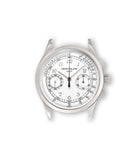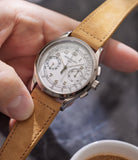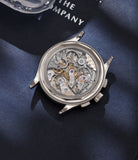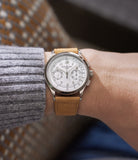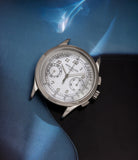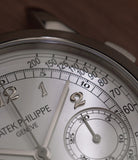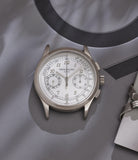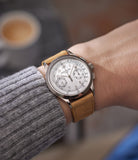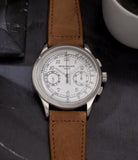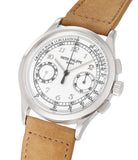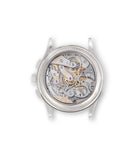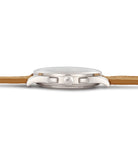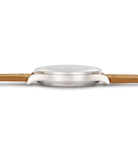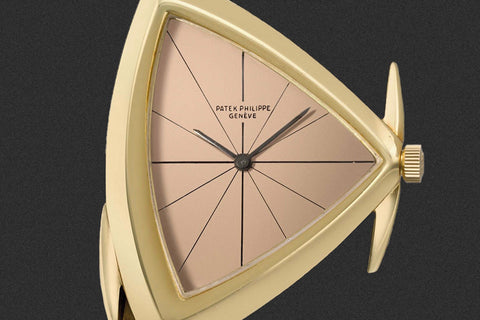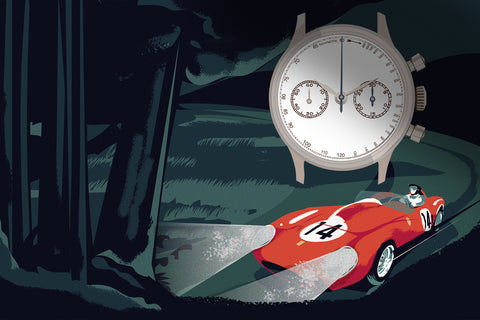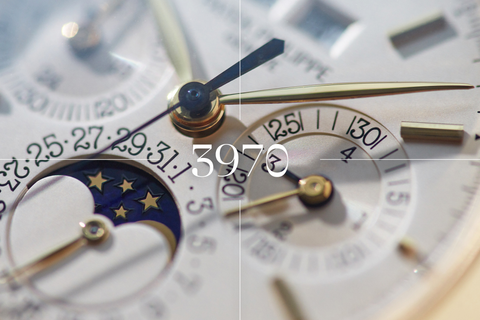The Patek Philippe reference 5170 was introduced twelve years ago, as the latest chapter in a legacy of manually wound, two-register chronographs. Replacing the Lemania-powered 5070, the reference 5170 was originally produced exclusively in yellow gold, as the 5170J, before later adopting the grey-gold case featured in this example, the reference 5170G-001*.
You May Also Like
Pulsometer
The key distinguishing feature of a pulsometer scale is that it reduces the number of pulsations a doctor has to count in order to take an accurate heart rate reading.
In practice, when using a pulsometer, a doctor will start the chronograph function at the first heartbeat and stop it after hearing a certain number. The stopped chronograph hand will then indicate the correct number of heartbeats per minute.
The required number of beats is always indicated on the scale itself, usually 15 or 30. Prior to this scale being introduced, the standard practice was to count for a full minute or to count for a smaller amount of time, say 15 seconds, and multiply the result.
Perhaps the most specific and purpose driven of any scale found on vintage watches, the pulsometer can be found on a wide range of vintage chronographs, especially from the ‘40s and ‘50s. During that era, doctors had the dual advantage of being part of a practical profession, whilst at the same time typically being rather economically prosperous. Simultaneously, the scale also appealed to some collectors looking to add an unusual detail to a watch they were commissioning. This combination of elements is precisely why pulsometers can be found on some of the most refined chronographs from the past.
Patek Philippe 130 in steel? Yes. Tasti Tondi 1463 pink on pink? Indeed. What about the Rolex Daytona? That too. Indeed, some examples have emerged with a bright blue pulsation scale found along the outer edge, having been nicknamed the ‘Doctor’ by some. The pulsometer is the only scale to ever have been added to a Daytona dial, with the whole dial layout having to be modified as a result of the space occupied by the scale. For anyone familiar with Rolex, you will know that this level of customisation is highly unusual. Only about ten are known to exist.










































































































































































































